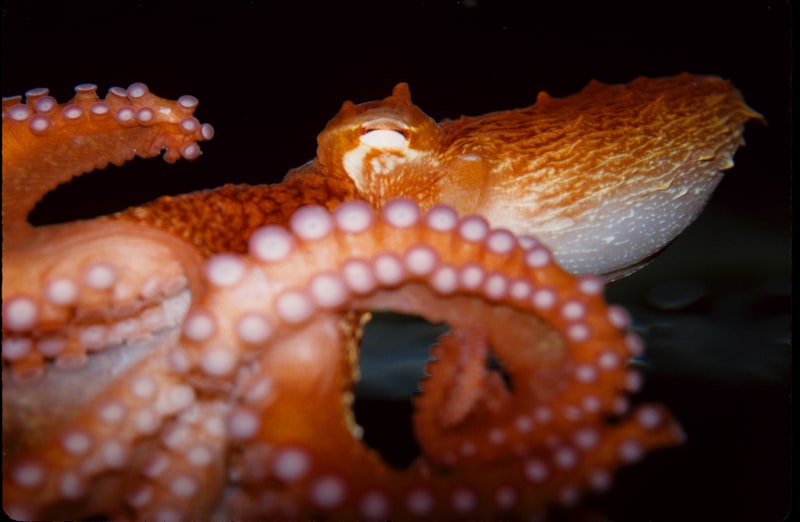Whales, the gentle giants of the ocean, use low-frequency moans and eerie cries that can travel for miles underwater. These deep sounds are not only for navigation but also play a crucial role in mating rituals and establishing dominance within their groups. It’s akin to them composing symphonies of the deep, each note carrying a story of their underwater world.
Dolphins, known for their intelligence and playful demeanor, communicate through a melodic series of clicks and whistles. These sounds are incredibly versatile, serving purposes ranging from hunting in coordinated packs to nurturing their young. It’s as if they converse in a language of echolocation, where each click serves as a question and each whistle as an answer.
The complexity of marine mammal communication extends beyond basic survival needs. It reflects their deep-rooted social structures and emotional bonds, where the exchange of sounds is a form of bonding and solidarity. Their communication prowess is not merely functional but also deeply emotive, resembling a ballet of sound waves that captivates researchers and enthusiasts alike.
In studying marine mammal communication, scientists unravel the mysteries of these majestic creatures’ lives. Each click, whistle, and song reveals a glimpse into their societies’ richness and complexity, offering profound insights into how they navigate, hunt, and thrive in the vast, echoing expanse of the sea. As we delve deeper into their acoustic world, we come to appreciate the harmony and rhythm that define their existence beneath the waves.
Unlocking the Secrets: How Marine Mammals Use Sound to Communicate
Have you ever wondered how marine mammals navigate the vast oceans and communicate with each other in their underwater world? The answer lies in their remarkable ability to use sound in ways that we are only beginning to understand.


Marine mammals, such as dolphins, whales, and seals, rely heavily on sound for various essential functions. One of the most fascinating aspects of their communication is echolocation, which works much like sonar used by submarines. Dolphins, for example, emit high-frequency clicks that bounce off objects and return to them, allowing them to create a detailed mental picture of their surroundings. This helps them locate prey, navigate through murky waters, and even recognize other individuals.
Whales, on the other hand, produce haunting melodies that travel for miles across the ocean. These songs are not just random sounds but complex patterns that may serve purposes ranging from attracting mates to establishing territory. Each species of whale has its own unique vocal repertoire, akin to a distinct musical language.
Seals communicate underwater using a combination of vocalizations and body language. Their calls can convey information about their identity, emotional state, and even warnings about predators. Some seals produce eerie underwater calls that resonate through the ocean depths, serving as both a means of communication and a form of echolocation.
Understanding how marine mammals use sound is not only a marvel of biology but also crucial for their conservation. Human activities such as underwater construction, shipping, and naval sonar can disrupt their delicate acoustic environment, leading to harmful consequences for these creatures. By studying their communication methods, scientists hope to find ways to mitigate these impacts and ensure the survival of these majestic creatures in our oceans.
Unlocking the secrets of how marine mammals use sound is a journey into a world of intricate communication and astonishing adaptability. It reminds us of the interconnectedness of life beneath the waves and the importance of preserving these remarkable animals and their habitats.
The Symphony of the Deep: Exploring Marine Mammal Vocalizations
Marine mammal vocalizations are as diverse as they are mysterious. Whales, known for their haunting songs that can travel thousands of miles, use these melodies not just to communicate but perhaps to express emotions we can only speculate about. Dolphins, with their high-pitched clicks and whistles, create intricate patterns of sound that serve as their language, allowing them to coordinate hunts and stay connected with their pod members.
These underwater sounds aren’t just noise—they’re a complex form of communication that scientists are still unraveling. Studying these vocalizations gives us insights into the behavior and social structures of these intelligent creatures. It’s like deciphering a grand musical composition where each note reveals a new layer of understanding about life beneath the waves.
The symphony of the deep is also crucial for conservation efforts. By monitoring these sounds, researchers can track the health of marine populations and detect changes in their habitats due to human activities or environmental shifts. It’s a delicate balance of preserving these natural melodies while safeguarding the future of these magnificent animals.
Next time you hear about marine mammal vocalizations, think of it as nature’s orchestra performing an intricate piece that connects us to the wonders of the underwater world. Each sound is a testament to the beauty and complexity of life beneath the surface, waiting to be explored and cherished for generations to come.
Listening In: Decoding the Language of Whales and Dolphins
Whales and dolphins are not just creatures of grace and beauty; they are also masters of language. Their underwater conversations, filled with clicks that can travel for miles, reveal a complex tapestry of communication. Scientists have deciphered that each species has its own dialect, akin to regional accents among humans. For instance, orcas off the coast of Norway speak differently from those near New Zealand.
Much like our own conversations, these cetacean communications serve various purposes. From coordinating hunts to establishing social hierarchies and even finding mates, their vocalizations play a crucial role in daily life. Imagine a symphony of clicks and whistles echoing through the ocean, each note carrying a message that shapes their underwater world.
But how do scientists decode these intricate languages? Advanced technology such as hydrophones allows researchers to eavesdrop on these conversations without disturbing their natural habitat. By recording and analyzing these sounds, scientists can unravel the mysteries of their social structures and behaviors.
Moreover, studying their language provides insights into their well-being and the health of marine ecosystems. Changes in their vocal patterns can indicate environmental stress or the impact of human activities like ship traffic and ocean noise.
Echoes in the Ocean: The Intricate Communication Systems of Marine Mammals
Marine mammals have evolved remarkable ways to communicate effectively underwater where sound travels faster and farther than in air. One of the most intriguing aspects of their communication is echolocation, akin to underwater sonar. Dolphins, for instance, emit high-frequency clicks that bounce off objects and return as echoes. This helps them discern the size, shape, and distance of prey or obstacles with astonishing accuracy.
Whales, on the other hand, are renowned for their haunting songs that can travel for thousands of miles. These complex melodies are not merely for entertainment; they likely play a crucial role in mating rituals and maintaining social bonds within their pods. Imagine a whale’s song echoing through the deep ocean, a testament to the vast distances over which these calls can be heard.
Seals and sea lions communicate through a variety of vocalizations such as barks, growls, and clicks. These sounds convey information about territory, hierarchy, and warnings of danger. For these social animals, effective communication can mean the difference between life and death in the harsh marine environment.
What’s truly remarkable is how these marine mammals adapt their communication strategies depending on their environment and social structure. Just like humans, they utilize different ‘languages’ to convey messages effectively underwater. Their ability to produce and interpret these sounds highlights the complexity and intelligence of marine mammal communication systems.
Next time you’re by the ocean, think about the hidden world of echoes beneath the waves. The intricate communication systems of marine mammals remind us of the vast diversity of life on Earth and the many ways organisms have adapted to thrive in their environments.
From Clicks to Songs: Understanding the Diversity of Marine Mammal Sounds
Humpback whales, renowned for their haunting songs, fill the ocean with melodies that travel for miles. Each song, complex yet ethereal, serves as more than just a vocalization; it’s a cultural hallmark passed down through generations. These deep resonances, once thought of as mere calls, now reveal intricate patterns akin to a musician’s intricate score.
Meanwhile, orcas, the apex predators of the sea, use a diverse repertoire of clicks and whistles to coordinate hunts with the precision of a well-rehearsed orchestra. Their vocalizations are not only about locating prey but also about nurturing bonds within their tightly knit pods.
The clicks and whistles of dolphins are akin to a lively conversation among friends, where every click and whistle carries meaning. It’s a language shaped by collaboration and shared understanding, much like humans conversing animatedly in a crowded café.
Even seals and sea lions contribute to this aquatic cacophony with their barks and calls, each species adding its unique timbre to the ocean’s chorus. Their vocalizations, often heard during breeding seasons or territorial disputes, paint a vivid picture of their social dynamics.
Understanding marine mammal sounds isn’t just about decoding noises; it’s about unraveling the fabric of their lives beneath the waves. It’s akin to deciphering an ancient manuscript where each sound, each modulation, reveals a deeper layer of their existence. As we delve deeper into these underwater soundscapes, we come to appreciate the richness and diversity of life in the ocean, where every click and song tells a story waiting to be heard.
Underwater Conversations: How Marine Mammals ‘Talk’ to Each Other
These underwater conversations are not just random noises. They’re sophisticated and purposeful, serving various functions in their daily lives. Imagine being in a world where sight is limited, but sound travels far and clear. Marine mammals have adapted to this environment by developing unique ways to communicate effectively over long distances.
Take dolphins, for example. They’re known for their clicks, whistles, and squeaks that they use to convey messages to each other. These sounds are produced in their nasal passages and can be directed with precision, almost like using a built-in sonar system. It helps them coordinate hunts, locate prey, and stay connected with their pod members.
Whales, on the other hand, are famous for their haunting songs. These melodic compositions can travel for miles underwater and are thought to be used for mating rituals and maintaining social bonds within their pods. The complexity of whale songs is still being studied, but researchers believe they contain specific patterns and themes that convey information about identity, location, and even emotional state.
Seals and sea lions use a combination of vocalizations and body language to communicate. From barks and growls to slapping flippers on the water’s surface, these gestures help them establish dominance, warn off intruders, and coordinate group activities like breeding or hunting.
What’s truly remarkable is how these marine mammals have adapted to their underwater world, where visibility is low and sound is the key to survival. Their communication methods are finely tuned over millions of years of evolution, allowing them to thrive in diverse ocean environments from the Arctic to the tropics.
Next time you watch a documentary or visit an aquarium, think about the intricate conversations happening beneath the waves. It’s a reminder of the richness of life in our oceans and the remarkable ways animals have found to connect with each other, even in the depths where few humans venture.
Sonic Signatures: Identifying Individuals Through Marine Mammal Calls
Imagine the vast blue canvas of the ocean, where the soundscape is painted by the clicks, whistles, and songs of dolphins, whales, and seals. These creatures use their vocalizations not just for basic communication but also for identifying themselves and others. Similar to how humans recognize each other’s voices, marine mammals rely on their distinct calls to navigate their surroundings and maintain social connections.
Researchers have delved into this underwater symphony, discovering that each species crafts its unique repertoire of sounds. For instance, dolphins use high-pitched clicks for echolocation and communication, while humpback whales serenade the seas with haunting melodies that travel for miles. These sonic signatures serve as more than just communication tools; they’re intricate pieces of each animal’s identity, reflecting their behaviors, social structures, and even emotional states.
The study of Sonic Signatures is not merely an academic pursuit but a window into understanding marine life on a deeper level. By analyzing these vocalizations, scientists can track populations, monitor behaviors, and even assess the health of ecosystems. It’s akin to deciphering a cryptic language where every whistle or click carries meaning, revealing the intricate tapestry of life beneath the waves.
Just as every human voice is unique, so too are the sonic signatures of marine mammals. They echo through the oceans, weaving a narrative of biodiversity and interconnectedness that underscores the importance of conservation efforts. As we continue to explore and protect these underwater realms, the study of Sonic Signatures promises to unlock further mysteries and deepen our appreciation for the wonders of marine life.
Frequently Asked Questions
How do marine mammals use echolocation?
Marine mammals use echolocation to navigate, find food, and communicate underwater. They emit sound waves that bounce off objects, allowing them to interpret the distance, size, and shape of their surroundings. This ability helps them thrive in dark or murky waters where visibility is limited.
What research methods are used to study marine mammal sounds?
This FAQ provides a concise overview of research methods used to study marine mammal sounds. It covers techniques such as hydrophones, passive acoustic monitoring, spectrogram analysis, and sound localization methods. The description emphasizes practical approaches and tools used by researchers to understand and monitor marine mammal vocalizations.
How can human activities affect marine mammal communication?
Discover how human activities can impact marine mammal communication. Learn about the specific ways in which underwater noise pollution, vessel traffic, and coastal development can interfere with the acoustic signals essential for marine mammals’ communication and survival.
Why is vocal communication important for marine mammals?
Vocal communication is crucial for marine mammals as it facilitates essential behaviors such as finding food, navigating their environment, and social interaction. Sound travels faster and more efficiently in water than in air, making it a highly effective means of communication for these animals.
What sounds do marine mammals use to communicate?
Discover the diverse sounds marine mammals use to communicate, from haunting whale songs to playful dolphin clicks. Learn how these sounds convey messages and play crucial roles in their social interactions and survival.


